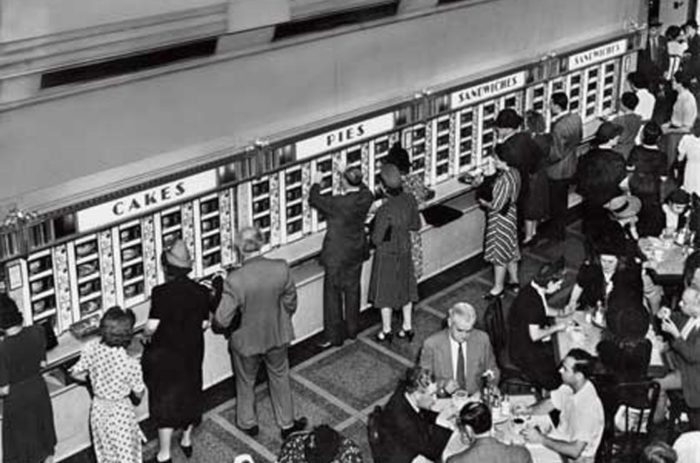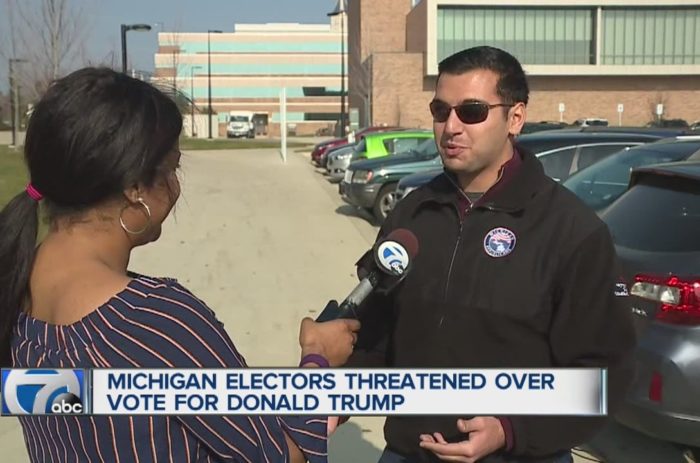The following is an excerpt from OpinionJournal.com’s “Best of the Web” written by the editor, James Taranto.
Hasn’t Everybody?
“Have Canada’s Economists Lost Interest in Canada’s Economy?”–headline, Globe and Mail (Toronto), Sept. 25
The Young and the Clueless
ObamaCare has been the law of the land for 3½ years, but the law’s central provisions don’t begin taking effect until next Tuesday. Politico warns that “the Obamacare that consumers will finally be able to sign up for next week is a long way from the health plan President Barack Obama first pitched to the nation”:
Millions of low-income Americans won’t receive coverage. Many workers at small businesses won’t get a choice of insurance plans right away. Large employers won’t need to provide insurance for another year. Far more states than expected won’t run their own insurance marketplaces. And a growing number of workers won’t get to keep their employer-provided coverage.
Other than that, it’ll go swimmingly. Well, actually it won’t, as we’ll explain presently–or rather, as we’ll let Bill Clinton, whom President Obama condescendingly calls his “secretary of explaining stuff,” explain. But first, speaking of whom, check out this delightfully Clintonian quote from a Washington Post story:
More importantly, software glitches on the federal exchange are making it difficult for the Web site to “reliably determine how much people need to pay for coverage,” according to a report last week by the Wall Street Journal.
In response, Joel Ario, a former HHS official who oversaw health exchange matters at the agency, told The Washington Post’s Sarah Kliff that “nobody is going to say we’re not starting on October 1, but in some situations, you may see a redefinition of what ‘start’ means.”
If they want to make their “redefinitions” stick in the media, they should change the name of the program to ChelseaCare.
As the Washington Free Beacon reports, however, Clinton said something decidedly un-Clintonian–that is to say, straightforward–in an “interview” yesterday with Obama: “This only works . . . if young people show up.” By “show up,” he means “buy ObamaCare policies.” A Bloomberg report elaborates:
[Twenty-five-year-old Steven] Binko is one of 2.7 million healthy 18- to 34-year-olds, dubbed the young invincibles, that the Obama administration has said are needed in the exchanges to offset the cost of providing care for millions of other uninsured people who are likely to be older and sicker. Without young adults, who pay for insurance yet rarely use it, premium costs in the exchanges may soar. . . .
The challenge is how do you make young people see the value of having insurance at a time in their lives when they are least likely to use it and least capable of affording it.
That’s not just a challenge, it’s a contradiction. Bloomberg stipulates that an ObamaCare policy will, at least for the young, be expensive (they are “least capable of affording it”) and offer minimal benefit (they are “least likely to use it”). You can’t “see the value” of such a proposition, because it’s a bad deal.
So–a bit abashed about our own Swedish heritage–we ask a Nobel Prize-winning economist to square that circle. Here’s former Enron adviser Paul Krugman, writing the other day on the New York Times website: “Yep, when it comes to reaching hipsters, or young people in general–I know, Katy Perry–Dems have big advantages; all that coastal cultural elite hatred suddenly turns into a big disadvantage for the right.” Brilliant idea, except that Katy Perry can’t even seem to get those young “hipsters” topay for her recordings.
Salon’s Brian Beulter offers what he imagines to be a practical appeal to the Binko types to buy ObamaCare policies. But it actually ends up making the opposite case. It’s based on Beulter’s own experience: Early in the morning of July 2, 2008, when he was 25, he was shot and gravely wounded on a Washington street.
Beulter was a self-employed freelancer, so that he was responsible for his own medical expenses. “I’d put my first insurance check in the mail on the evening of July 1, 2008”:
My medical bills totaled about $200,000, mostly attributable to major surgery and a 10-day hospital stay. My deductible more than cleared out my bank account, but in the end, my insurer paid almost every other penny, and saved me from bankruptcy or a lifetime of debt. For $200,000 you can buy an Ivy League education, a home, a law degree, a secure retirement or a splenectomy. But there’s no equity, dividend or residual value in a splenectomy.
Assuming the splenectomy saved Beulter’s life, his assertion that it has no “residual value” suggests that he has a serious self-esteem deficiency. Good thing mental health is an “essential” benefit under ObamaCare!
Beulter means to suggest that buying insurance was a wise decision–but he admits it was merely a lucky one:
I don’t know how much difference that scary (but extremely fortunate) timing made. It’s possible my insurance would have covered my bills even if I hadn’t mailed the check that night. But that’s sort of beside the point. The point is that I’d just enrolled in insurance I never thought I’d need, and then unexpectedly needed it–badly–just a few days later. It cost me about $100–about the amount millions of young people will be asked to pay out of pocket under Obamacare. Two-thousand-to-1 is a pretty good payout.
This is analogous to a lottery winner boasting about his investment acumen (and the payout of a typical lottery jackpot is a lot “better” than 2,000 to 1). To be sure, the comparison feels inappropriate because of the psychological phenomenon of loss aversion: The thought of going through a life-threatening traumatic injury is far more unattractive than the thought of a sudden financial windfall is attractive.
As a matter of rational analysis, however, the observation that 2,000 to 1 “is a pretty good payout” does not prove that the bet was a good one. The odds of suffering a traumatic injury in one month (presumably the period that $100 premium covered) are vastly less than 1 in 2,000. Of course being shot isn’t the only event that triggers a medical-insurance payout, but since insurance companies have to pay administrative costs and make a profit, the aggregate payouts have to be less than the aggregate premiums.
How much less is known as the “medical loss ratio,” and it is fixed by ObamaCare, asthe Post’s Kliff notes: “The federal law, starting in 2011, began requiring all plans to spend at least 80 percent of subscriber premium dollars on medical care and related ‘quality improvement activities.’ ” For simplicity’s sake, let’s ignore the “quality improvement” loophole and call it an 80% payout. That’s considerably better than state lotteries offer, but worse than most casino games–even slot machines.
Now again, there’s a crucial psychological difference between insurance and gambling, and it comes down to loss aversion. What you get in exchange for the insurance company’s “vigorish” is peace of mind–reassurance that if you are visited by illness or injury, financial ruin will not accompany it.
The trouble is that loss aversion also militates against buying insurance. Especially if you don’t make a lot of money–and many young people don’t–writing that premium check is painful if not prohibitive. Steven Binko, who lost his job at Olive Garden and is now unemployed, tells Bloomberg he couldn’t afford even $40 a month.
And ObamaCare makes insurance a bad deal for young adults in numerous ways. First, that (hypothetical) 80% payout is an aggregate figure. Price-fixing to keep premiums down for older policyholders necessarily raises costs for younger ones. Mandated coverage for routine expenses, such as Sandra Fluke’s pills, raises prices further.
Meanwhile, ObamaCare’s prohibition on the denial of coverage for “pre-existing conditions” both pushes up costs for healthy policyholders (who again are disproportionately young) and reduces the benefits of–or the need for–insurance.
Beulter notes that this provision of ObamaCare would not have helped him if the law had been in effect and he had been uninsured when he was shot:
One thing these conservatives are telling young people is that Obamacare will be different [from the current system]. Because it guarantees that people with preexisting medical conditions can buy insurance, they claim opting out carries no risk. Get sick or injured? Then you can reconsider your decision to opt out.
But this is a falsehood.
For the first year, Obamacare will have an unusually long open-enrollment period. It starts on Oct. 1, but eligible individuals can sign up through March, even if stricken by accident or illness. After that, though, anyone who decides, or is persuaded, to “skip” Obamacare will be as vulnerable as I would’ve been if I’d never applied for insurance and dropped that check in the mail. They’ll be locked out of the system until the next open enrollment period begins on Oct. 14, 2014. That open enrollment period will last just 53 days. Break a leg or develop a serious illness in the interim and you get to choose between paying tens of thousands of dollars out of pocket or suffering for months and rolling the dice with a delayed diagnosis.
So it isn’t true that forgoing insurance will carry no risk. But it will carry a considerably lesser risk than under the status quo ante. If you opt out of insurance under ObamaCare, your only major risk will be that of a catastrophic illness or injury–one requiring expensive treatment immediately or in a matter of months. (How many months depends on the time of year, so that as the open-enrollment period approaches, the danger of dropping your insurance declines.)
Let’s illustrate the point with a personal anecdote. In July 2008, the same month Beutler got shot, this columnist had a hip resurfacing. It was covered by employer-provided insurance–and, like Beulter, we were obviously happy to be covered. But what would have happened if we had been uninsured?
In late June or early July 2007, we noticed a mild pain in our leg. We didn’t think much of it at first, but it persisted, and finally after about two months we went to an orthopedist. She prescribed physical therapy, which relieved the pain but left a stiffness in the hip joint. At this point she sent us for an MRI, on the basis of which she diagnosed avascular necrosis, a rare degenerative bone condition. That would have been October or November.
Presumably under the pre-ObamaCare regime, we would have been uninsurable now that we had a pre-existing condition. Under ObamaCare? No problem. The diagnosis would have been perfectly timed, coming either during or just before the open-enrollment period. It’s possible we’d have delayed visiting the doctor during the summer had we lacked insurance, but by October we’d have known we needed insurance, so the diagnosis would be delayed only until January (as ObamaCare enrollment is for the following calendar year).
To be sure, when this all happened, we had aged out of the “young invincible” demographic. Thus, had we been faced with the choice of an ObamaCare policy or going uninsured, it might have been worth buying insurance even before we got sick.
But the success of ObamaCare depends on enrolling large numbers of young people while making insurance both more costly and less necessary for them. One can argue that buying insurance is a rational choice, but any way you slice it, that argument will be weaker under ObamaCare than it was before. Katy Perry has her work cut out for her.
For more “Best of the Web” click here and look for the “Best of the Web Today” link in the middle column below “Today’s Columnists.



